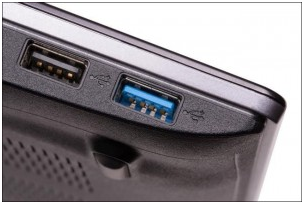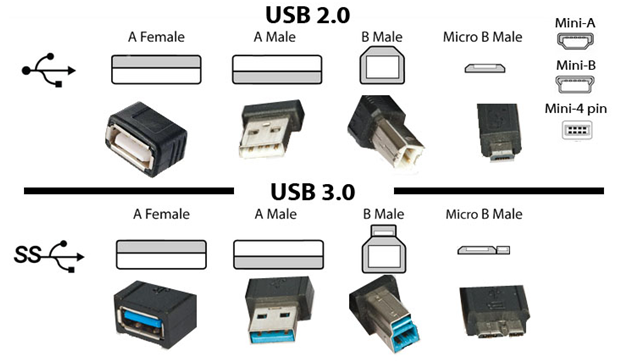Differences And Benefits of USB 2.0 vs USB 3.0
Universal Serial Bus (USB) was originally developed to define communication protocols, including cables and connectors, between computers and electronic devices like printers and scanners. The USB port was adopted as the basic connection portal as the number of devices multiplied in quantity and types. Devices can connect to computers with USB ports allowing recharging and communication thereby replacing the requirement of adapters and power chargers.
USB 3.0 vs USB 2.0
Transfer rates: USB 2.0 has transfer rates of 480 Mbps, and USB 3.0 has transfer rates of 4.8 Gbps, which is ten times faster.
Dual-bus architecture: The amount of wires was doubled, which is from 4 wires to 8 wires. Additional wires need more space in both the cables and connectors, so new types of connectors were designed.
Power consumption: USB 2.0 caters up to 500 mA whereas USB 3.0 caters up to 900 mA. The USB 3.0 devices contribute more power when needed and conserve power when the device is connected but idling.
More bandwidth: Instead of one-way communication, USB 3.0 uses two unidirectional data paths, one to receive data and the other to transmit while USB 2.0 can only handle one direction of data at any time. Dual-simplex simultaneous bi-directional data flow for SuperSpeed instead of half-duplex unidirectional data flow.
Improved bus utilization: A new feature was added to USB 3.0 to let a device asynchronously notify the host of its readiness.
When data is being transferred through USB 3.0 devices, cables, and connectors, the transaction is triggered by the host making a request followed by a response from the device. The device either accepts the request or rejects it. If accepted, the device sends data or accepts data from the host. If there is insufficient buffer space or data, it responds with a Not Ready (NRDY) signal to tell the host that it is not able to process the request. When the device is ready then, it will send an Endpoint Ready (ERDY) to the host which will then reschedule the transaction.
Backward Compatibility
USB 3.0 is compatible with USB 2.0. However, the USB 3.0 product will perform at the same level as a USB product, so speed and power benefits will not be fully realized. USB 3.0 receptacles are electrically compatible with USB standard 2.0 device plugs if they physically match. USB 3.0 type-A plugs and receptacles are completely backward compatible, and USB 3.0 type-B receptacles will accept USB 2.0 and earlier plugs. However, USB 3.0 type-B plugs will not fit into USB 2.0 and earlier receptacles. This means that USB 3.0 cables cannot be used with USB 2.0 and USB 1.1 peripherals, although USB 2.0 cables can be used with USB 3.0 devices, if at USB 2.0 speeds.
High-Speed and SuperSpeed
There are four distinct data rates, each new major USB specification introduced a new data rate. USB 2.0 has Low-Speed, Full-Speed, and High-Speed. USB 3.0 Low-Speed, Full-Speed, High-Speed, and SuperSpeed. USB 2.0 does not always mean High-Speed. This is usually, but not always, the case.






